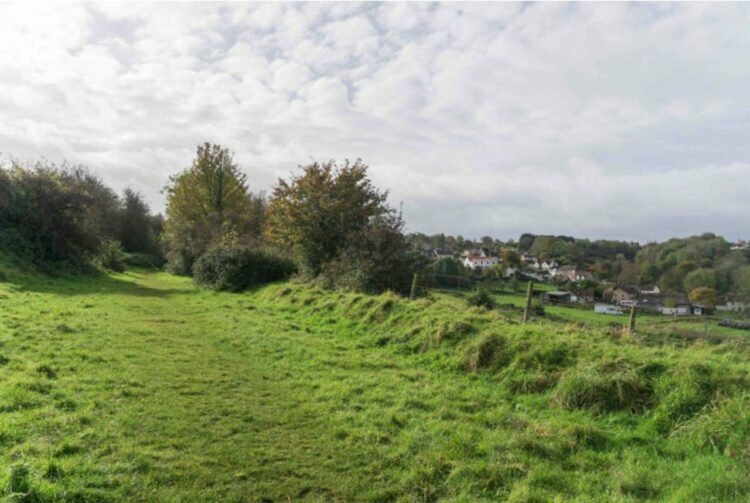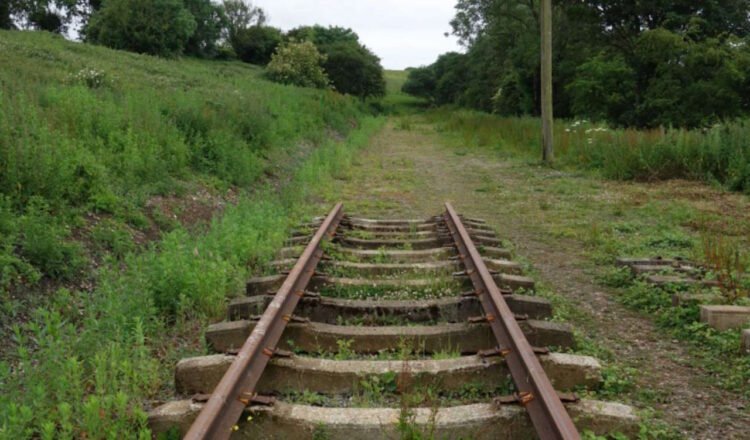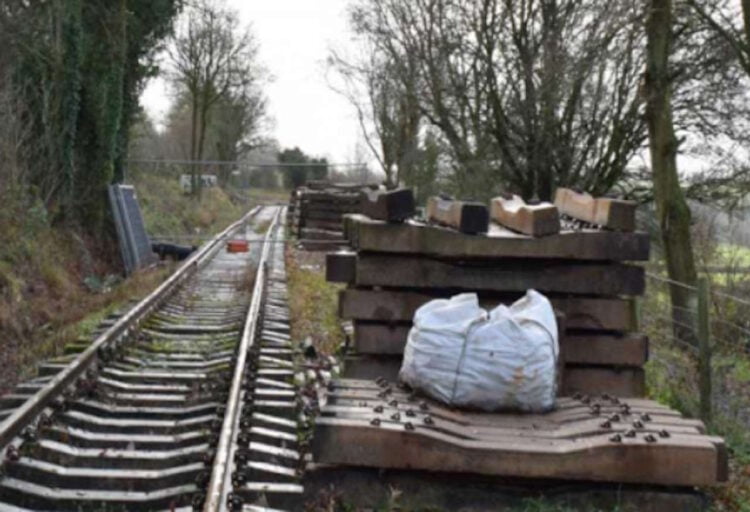The Somerset & Dorset Railway Heritage Trust has completed its purchase of an important section of the former Somerset & Dorset main line railway that is vital to the railway’s future plans to expansion.
The section of line purchased consists of 750 yards of former track bed from just south of the Chilcompton Tunnels to the Redan Bridge, as well as several acres of former agricultural land next to the line that the vendor stipulated had to form part of the purchase. The vendor has said that he is happy that an operational railway will be reinstated.

Ownership of the additional land will benefit the trust as will provide a useful point of road access as well as the potential for income in the future. Purchase was completed after a protracted period of detailed negotiations, and was funded from a generous legacy left to the Trust with the request that it should be used for the future development of the railway.

The change of ownership, which was confirmed on Tuesday, 10 October, will now allow the Trust to move one step closer in its ambition to extend the operational railway. It is thanks to such legacy donations that the future of major projects such as this one can be realised, and it isn’t possible to overstate their value and importance.

Before newly purchased track bed can be connected to the existing running line, infilled cutting leading up to the Chilcompton Tunnels must be cleared, whilst there is another issue that both tunnels are currently occupied by tenants of Highways England. However, the Trust is liaising with all key stakeholders to resolve these issues.
The Trust is following the lead shown by other heritage railways that it is important to take a long-term view of the railway’s future regardless of what obstacles there may be. With that in mind, the current Trustees are doing all that they can to lay the long term foundations for future trustees to build on.
Before any work is done to clear the newly purchased section of trackbed, a considerable amount of consolidation work must be done, including installing of robust fencing. The Trust will also be meeting with Chilcompton Parish Council to provide it with details of the overall strategy for the eventual reinstatement of an operational railway on the trackbed, and to garner its support for the Trust’s plans.
To cover the cost of that fencing and its development plans for the extension, the Trust has started an appeal to attract donations, and details of ways to donate can be found online at the Trust’s Website: Fundraising & Appeals – Somerset & Dorset Railway Heritage Trust.






Responses
I am very much in favour of trains and not roads. I also use buses whenever I can rather than our car. However, I was told that the continuation of the line is not for a commercial train but a continuation of the steam train just to go a few further yards. Please can someone tell me what exactly is planned and how it is going to work with houses in the way if the idea is to continue with a passenger train.
For those who are debating the closures of yesteryear, can I suggest Charles Loft’s book, Last Trains? What went on was scandalous. Governments in the UK have no idea how to run public transport, they never have and never will. You only have to look at the appalling way they have organised the Manchester system to realise that Network Rail is clueless.
To the person who is concerned about the loss of footpath and habitat, I don’t know the extent of the railway’s plans but it is a double track formation – so there is room for one line to be relaid and the footpath to run alongside. With regards to habitats, railways often act as wildlife corridors as the amount of habitat space taken up by the trackbed is relatively small and the rest of the land around can be managed in such a way as to promote biodiversity and enhance the area, as long as it is done correctly.
You are quite correct that the Conservative Minister of Transport Ernest Marples commissioned the Beeching Report and sanctioned the first wave of closures but it was successive Labour ministers of transport who approved the majority of the closures following Labour’s victory in the general election of October 1964, so both political parties signed the death warrants for the approx 2000 stations that closed between 1964 and the early 1970s.
It was so sad to see the Railway network being reduced. Completely lack of vision
John smith is over joyed
Has anyone asked the local community if they want this? It was extremely unpopular when suggested before. Could you please let Chilcompton know whether losing this stretch of a much loved walk and what it will do to the wildlife (already depleted) is worth 750 yds of extra railway? Just curious. Thank you.
Totally agree.Long live Heritage Railways Marples can rot .
The local community needs to understand that there must be an end to all road building and associated ugly ribbon development and reversal of the corrupt Beeching cuts to get people and freight off the roads and back onto the railways.
There was a railway here previously, and the wildlife coped Better this than an unwanted road. Rail kill’ will be far lower than ‘road kill’, and the restricted access will protect nesting birds.
Have yet to have a trip on the Somerset and Dorset Railway, but will look forward to the experience. We live in South Devon now so am enjoying the South Devon Kingswear Railway.
Great to see that some sensible purchases happening, and not a Building company involved with Building Houses.
Well done.
Excellent news. Some while ago, studying all the classified and open written material relating to Beeching, the sad thing was that the report claimed to balance the books for 1970. It never happened. The real bottom line was to reduce the station staff wages bill and closing the stations was the only easy way. The amount of money saved was said to be unknown, but with the costs of closures and dismantling costs, it was put around £25m. New Topic- Out of all the remaining freight lines, hidden away I would welcome some data as to how many Km in total are there; so an eventual total upgrading price could be calculated to restore these lines. Some two years ago or so, in Parliament the Transport Secretary was asked about an average cost per Km of restoring track costed. He could not answer.
I believe it was Ernest Marples, owner of Marples Ridgeway the highway construction company who was minister of transport worked with Beeching to degrade the railways for obvious reasons. It just reeks of corruption.
Yes, we thought that at the time
Dr Beeching was just following instructions. He saved the railways.
So true but never been discussed
Great news, but its important that local people and the young get behind this and other worthy heritage railway projects, I was only 3 at the end of steam, but Ive been following the preservation movement all of my life (inherited from my father), would not be without it.
Some of the closures was down to BR Regioal bosses do there best to wreck lines they had taken over Regional rivals who didn’t want to supply a train service. IN this case GWR
I wonder what pathetic amounts of money butcher Beeching got flogging off the assets. A man with absolutely no vision, a glorious beautiful asset that cost a fortune in money time blood sweat tears and probably lives to put together. Thank god for Ivo Peters RIP.
It wasn’t Beeching who got rid of the lines. His name was used as a scapegoat – he simply wrote up a report on less profitable lines. If anyone should be blamed it should be Ernest Marples, who was the Minister of Transport at the time.
This is local to me. This is great news, I just hope that the local community gets behind this.
Easy to blame him I know , but he only designed the program he was asked to design. By the British government. Who then ,I believe, fought an election promising amongst other things not to implement that plan, and then , upon winning, implemented that plan. Wilson , I believe? Blame him. He did it .
Actually it was Transport Minister Earnest Marples with the Macmillan Governement who commissioned the Beeching Report and who followed through with nearly all the closures Beeching recommended.
Marples was also joint owner of the road construction company Marples-Ridgeway which had received several government contracts to build Britain’s then just expanding motorway network, and anticipated getting more of these.
If ever there was a clear conflict of interest, this was it! However, it seems in those days such conflicts of interest were not taken as seriously as they would be now.
Brilliant news. At 76 years young I still might have time to ride the S+D yet!
Excellent news for heritage fans..Beeching butchered the S and D rail network.